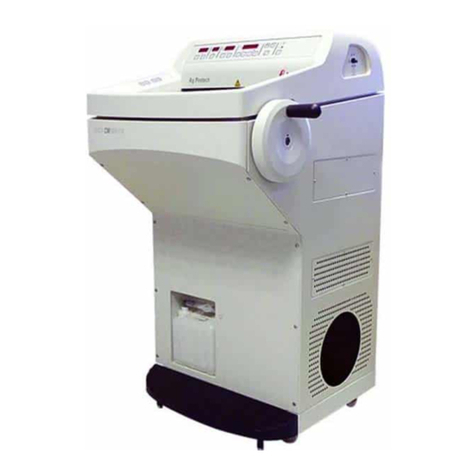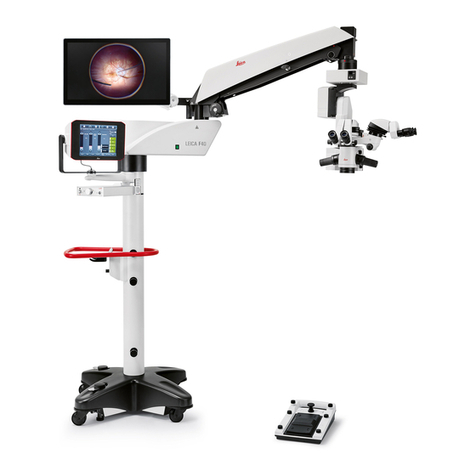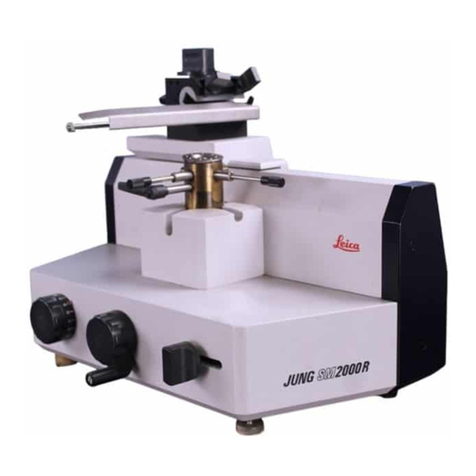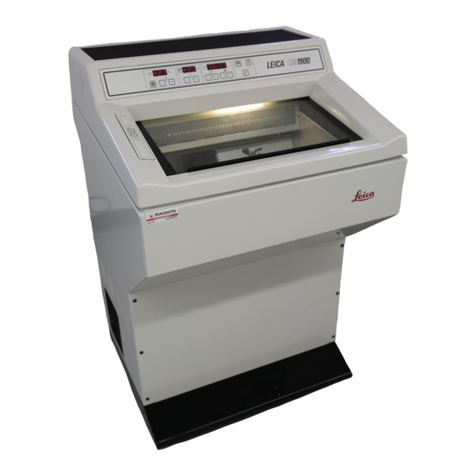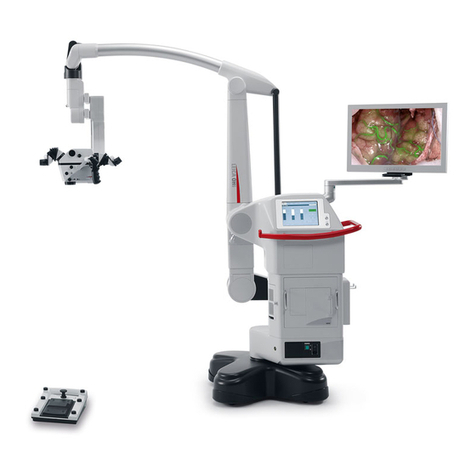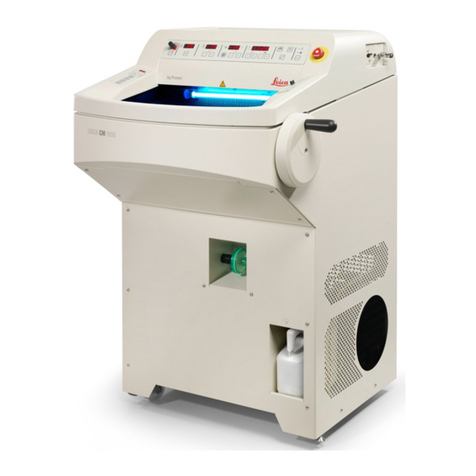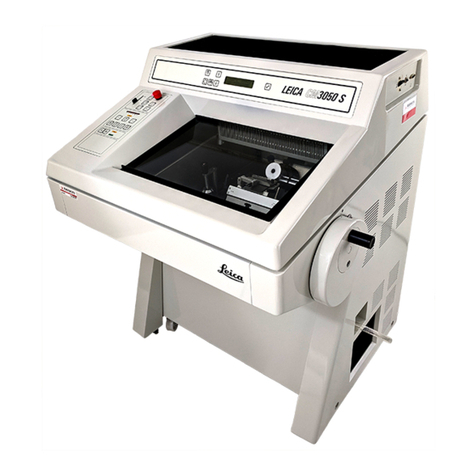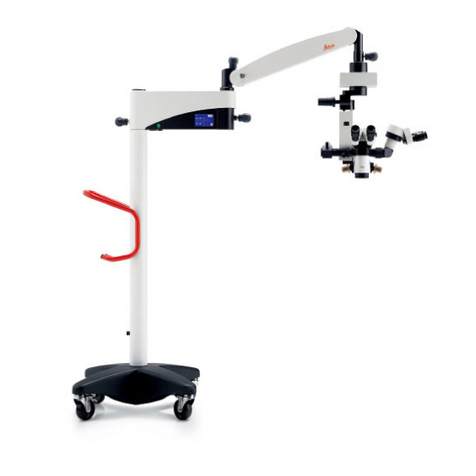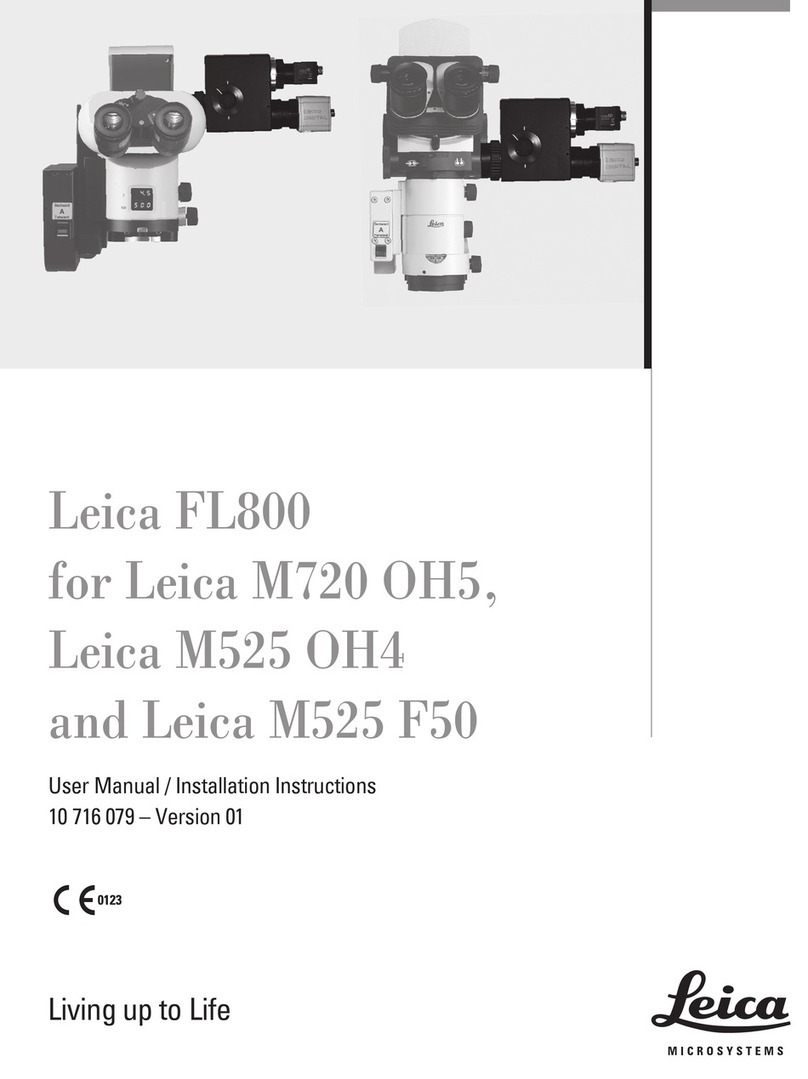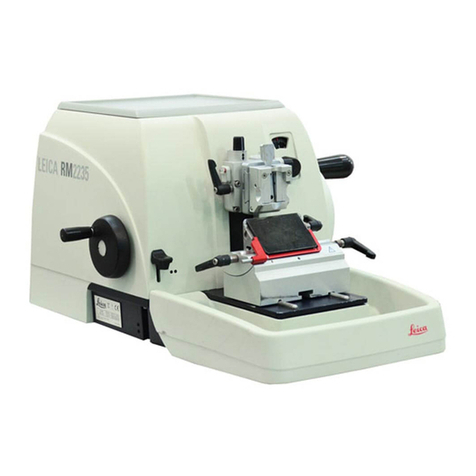5
Leica CM1860 /CM1860UV – Cryostat
7. Daily Use of the Instrument.................................................................................................................. 35
7.1 Specimen freezing ..................................................................................................................................... 35
7.1.1 Quick freeze shelf....................................................................................................................................... 35
7.1.2 Stationary heat extractor (optional) ............................................................................................ 36
7.2 Specimen discs .......................................................................................................................................... 36
7.2.1 Inserting the specimen discs into the specimen head ........................................................................ 36
7.2.2 Specimen orientation ................................................................................................................................ 36
7.3 Sectioning.................................................................................................................................................... 37
7.3.1 Blade holder CE .......................................................................................................................................... 37
7.3.2 Blade holder CE-TC.................................................................................................................................... 43
7.3.3 Knife holder CN........................................................................................................................................... 44
7.3.4 Knife holder CN-Z with anti-roll guide .................................................................................................... 48
7.3.5 Cleaning the blade and knife holders ..................................................................................................... 48
7.3.6 Installing the shelf (movable) (optional) ................................................................................................. 50
7.4 Temperature selection chart (in minus°C) ............................................................................................ 51
7.5 Defrosting .................................................................................................................................................... 52
7.5.1 Automatic defrosting of the cryochamber............................................................................................. 52
7.5.2 Manual defrosting of the cryochamber.................................................................................................. 52
7.5.3 Manual defrosting of the quick freeze shelf.......................................................................................... 53
7.6 Terminating work ....................................................................................................................................... 53
7.6.1 Terminating daily work.............................................................................................................................. 53
7.6.2 Shutdown for a longer period .................................................................................................................. 54
8. Troubleshooting ..................................................................................................................................... 55
8.1 Error messages in the display.................................................................................................................. 55
8.2 Temperature control button ..................................................................................................................... 56
8.3 Possible sources of error, causes and remedies ................................................................................. 57
8.3.1 Changing the battery ................................................................................................................................. 61
9. Cleaning, Disinfection, Maintenance ................................................................................................ 62
9.1 Cleaning ....................................................................................................................................................... 62
9.2 Spray disinfection with Leica Cryofect................................................................................................... 63
9.3 Maintenance............................................................................................................................................... 64
9.3.1 General maintenance instructions.......................................................................................................... 64
9.3.2 Replacing the fuses ................................................................................................................................... 66
9.3.3 Replacing the UVC lamp............................................................................................................................ 66
9.3.4 Replacing the fluorescent lamp............................................................................................................... 68
10. Ordering Information, Components and Consumables................................................................... 69
10.1 Ordering information.................................................................................................................................. 69
10.2 Mobile heat extractor – application............................................................................................ 92
10.3 Cold extractor – application ........................................................................................................ 92
11. Warranty and Service ........................................................................................................................... 93
12. Decontamination Certificate (Master)............................................................................................... 94
Table of Contents







